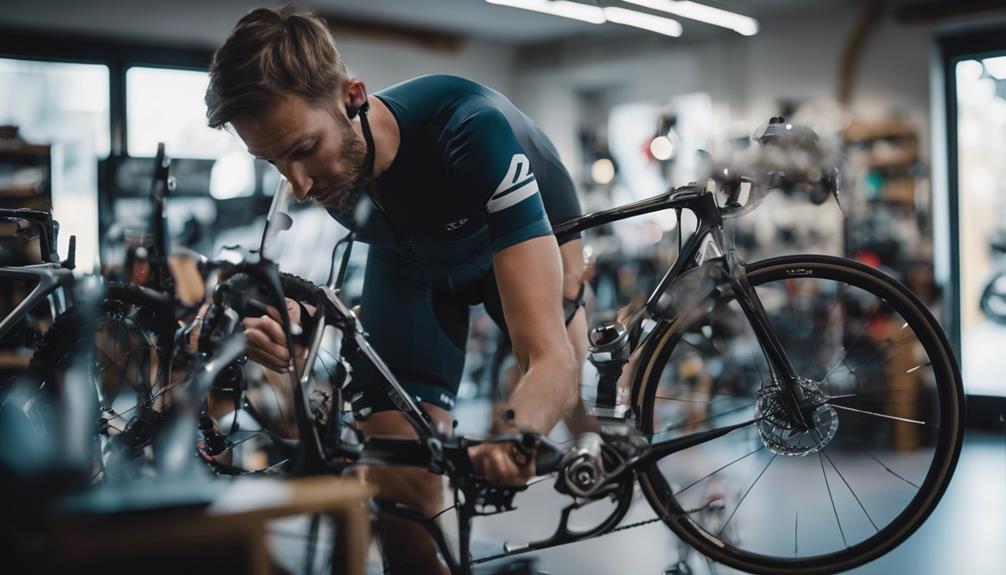Whether you’re a seasoned cyclist or a newcomer to the biking world, understanding bike gear is essential for enhancing your riding experience. The right equipment not only improves performance but also ensures safety and comfort. In this comprehensive guide, we will explore the different types of bike gear, their functions, and tips on how to choose the best gear for your biking adventures.
Understanding Bike Gears: The Basics
Bike gears are a system of components that help manage the bike’s speed and power. They are crucial for optimizing performance on various terrains, from steep hills to flat roads. Here are the key components of bike gears:
- Chainrings: Located at the front of the bike, chainrings are the large gears attached to the pedals. The number of teeth on these rings determines how easy or hard it is to pedal.
- Derailleurs: These are mechanisms that move the chain from one gear to another. There are typically two derailleurs—one for the front chainrings and one for the rear cassette.
- Cassette: Found at the back wheel, the cassette consists of multiple gears (or cogs) that allow the cyclist to switch to different gear ratios.
- Shifters: Located on the handlebars, shifters are the controls that allow you to change gears while riding.
Types of Bike Gears
Bike gears can be categorized based on the type of bike and intended use. Here are the primary types:
1. Road Bike Gears
Road bikes are designed for speed and efficiency on paved surfaces. They typically feature:
- Higher gear ratios to facilitate faster speeds.
- Compact or standard chainrings (usually two).
- A wider range of rear cassettes for hill climbing.
2. Mountain Bike Gears
Mountain bikes are built to handle rough terrains and steep climbs. Their gearing system often includes:
- Lower gear ratios for climbing and obstacle navigation.
- A single chainring setup (1x) to simplify shifting and reduce weight.
- Wider tires and stronger components to withstand rugged trails.
3. Hybrid Bike Gears
Hybrid bikes merge features from both road and mountain bikes, offering versatility for various riding conditions. Common characteristics include:
- Moderate gear ratios suitable for both streets and light trails.
- Typically, three chainrings for a broader range of gears.
- Comfortable geometry for casual riding.
How to Choose the Right Bike Gear
Selecting the right bike gear can significantly impact your cycling experience. Here are some factors to consider:
1. Riding Style
Your riding style will dictate the type of bike gear you need. Consider the following:
- Commuting: A hybrid bike with a broad range of gears is ideal for city commuting.
- Recreational Riding: A mountain bike may be suitable for off-road trails.
- Competitive Racing: A road bike with high gear ratios will help achieve faster speeds.
2. Terrain
The terrain you plan to ride on will also influence your gear selection:
- Flat Surfaces: Higher gear ratios allow for efficient pedaling at speed.
- Hills: Lower gear ratios help with climbing steep inclines.
- Mixed Terrain: A bike with a versatile gearing system is beneficial for varying landscapes.
3. Fitness Level
Your fitness level will determine how much effort you can exert while biking:
- Beginners: A bike with lower gears makes pedaling easier and more manageable.
- Experienced Cyclists: Advanced riders may prefer bikes with higher gear ratios for improved efficiency.
Maintenance of Bike Gears
Proper maintenance is crucial for the longevity and performance of your bike gears. Here are essential maintenance tips:
- Regular Cleaning: Clean your chain, derailleurs, and cassette to prevent dirt buildup.
- Lubrication: Apply lubricant to the chain regularly to ensure smooth operation.
- Check Alignment: Ensure that derailleurs are correctly aligned for optimal shifting.
- Inspect for Wear: Regularly check for signs of wear on chainrings and cogs, replacing them as necessary.
Case Studies: Real-Life Examples
To illustrate the importance of bike gear selection, let’s look at a few case studies:
Case Study 1: Commuter Cyclist
Jane, a daily commuter, invested in a hybrid bike with a 3×8 gearing system. This allowed her to navigate city streets with ease while also having the versatility to tackle bike paths. After switching to this setup, Jane reported a 30% reduction in commute time and felt more comfortable tackling inclines.
Case Study 2: Mountain Biker
Mark, an avid mountain biker, transitioned from a traditional 2x gearing system to a minimalist 1x setup. This change reduced weight and simplified shifting, allowing him to focus on the trail rather than constantly adjusting gears. His performance improved significantly, with Mark completing trails 15% faster than before.
Statistics on Cycling and Gear Usage
Understanding cycling trends helps reinforce the importance of selecting the right gear:
- According to the League of American Bicyclists, bike commuting has increased by 60% in the last decade.
- Studies show that 70% of cyclists prefer bikes with multiple gears for versatility.
- A survey conducted by Cycling Weekly found that 82% of mountain bikers believe that a single chainring setup improves their riding experience.
Conclusion: Gear Up for Success
Choosing the right bike gear is essential for enhancing your cycling experience, whether for commuting, recreation, or competition. By considering your riding style, terrain, and fitness level, you can select the perfect gear setup for your needs. Regular maintenance will ensure that your bike operates smoothly, allowing you to enjoy the ride. With the right gear, you can pedal confidently into the future, ready to tackle any challenge the road or trail throws your way.
Ultimately, investing in quality bike gear is investing in your overall cycling experience—make it count!
